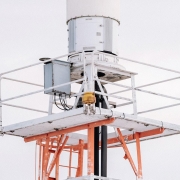Most businesses will hold data in a data centre. In our Beyond the Cloud Research 2018 we found that 74.7% of respondents hosted cloud services in the UK. We expect our data will be stored in an modern data centre. However, there have been reports that operators are not taking disaster recovery precautions to protect their sites from extreme weather events.
You may think wonder why I am writing about this finding. Yet, we have all heard about climate change.
Uptime Institute reports data centre operators are failing to factor the growing risk posed by freak weather events. This is especially in regard to recovery plans. Included are preventative steps to safeguard facilities for heatwaves, water shortages, wildfires and floods. There daily news reports suggesting the increase of these events.
The Uptime Institute published a White Paper commenting
“now, more than ever, it is crucial to understand any potential vulnerabilities to make new and existing facilities better prepared for extreme weather events.
“During [storm and flooding] events, emergency systems can fail, IT staff availability can be compromised, and gaining physical access to the facility can be challenging.
“Having a robust and comprehensive disaster response and recovery plan in place is essential to be fully operational and serve end-users without service disruption.”
This of course includes climate change-induced disruption.
Why is this specific to data centres?
After reading the White Paper, I decided to do some research into data centres. A 15-megawatt data centre can use up to 1.6 million litres of water a day, according to one estimate. I found that the move to cloud computing is concentrating enormous computing power in these data centres. These data centres hold tens of thousands of servers. In many designs, all the heat from the servers is managed through cooling towers. Hot waste water from the data centre is cooled and heat is removed through evaporation. The majority of water that remains is returned to the data centre cooling system. The rest is drained out of the system to remove sediment.
Therefore, droughts could have a serious impact on the ability of data centres to function. The rise in global temperature could also exacerbate the situation.
However, the Uptime Institute research of 900 data centre operators and IT Professionals found that 71% of respondents are not preparing for severe weather events. In addition, 45% of respondents are “ignoring the risk” of climate-change related disruptions to their data centres.
How data centres should be preparing for climate change
Conversely, for organisations that do want to act, protecting data centres from extreme weather events will require several approaches. This includes ensuring there are enough staff on hand during an emergency.
Uptime Institute recommend
“if you are staffed for an emergency event, considerations should be made for food and sleeping arrangements for any staff who may have to stay on-site during an extended shift”.
“The Uptime Institute is increasingly finding that operators are not planning for increased heat and humidity, and they are putting in cooling systems that may not be adequate to meet future needs.”
“Operators must start designing power and cooling systems to cope with the long-term consequences of climate change”.
To conclude, considering how often I read about climate change in the news and the ‘Beyond the Cloud’ report, I have to agree with Uptime Institute..










Leave a Reply
Want to join the discussion?Feel free to contribute!